LG HU85LS CineBeam Laser 4K Review
An interesting, more affordable living room-friendly alternative to a massive TV
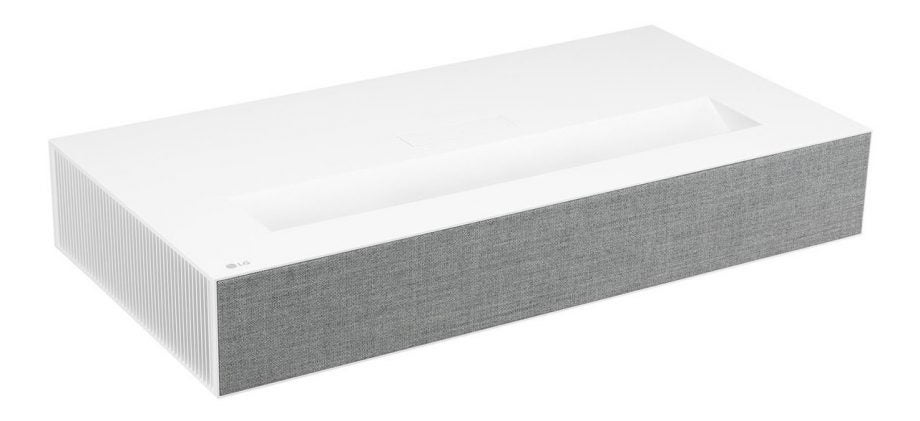

Verdict
Provided you’re not susceptible to seeing the LG HU85LS’s rainbow-like colour noise, it’s a uniquely smart, user-friendly and effective addition to the growing “living room projector” market
Pros
- Bright, colourful HDR pictures
- Excellent, TV-like user system; includes streaming app support
- Very good sound for a projector
Cons
- Black levels in dark rooms are only decent
- Some rainbow-like noise
- Not as cheap as non-laser models
Key Features
- Bright room and dark room settings
- Built-in webOS 4.5 smart system
Introduction
The £4860 LG HU85LS CineBeam is an ultra short-throw DLP projector with laser lighting. It can generate 120-inch 4K and high dynamic range images while sat just inches from a wall or screen, and carries a powerful built-in audio system, too.
What’s more, unlike almost all other projectors it also comes with a built-in smart system, complete with streaming apps, multimedia playback and built-in voice control.
Availability
- UKRRP: £4860
- USARRP: $4999
- EuropeRRP: €4999
- CanadaRRP: CA$6497
The LG CineBeam HU85LS is priced at £4860 / $4999 / €4999 / CAD$6499. It’s not currently on sale in the Australian market.
Design
- Elegant design
- Low profile
- Tweaked Magic Remote
The LG HU85LS is much bigger than most projectors, but it wears its size well. Its crisply cut white top edge and sides are elegantly offset by a neat Kvadrat grey cloth cover over the rear side. The light window in the top edge is tucked away so that you can’t see it, or any distracting light leakage, from a normal viewing position.
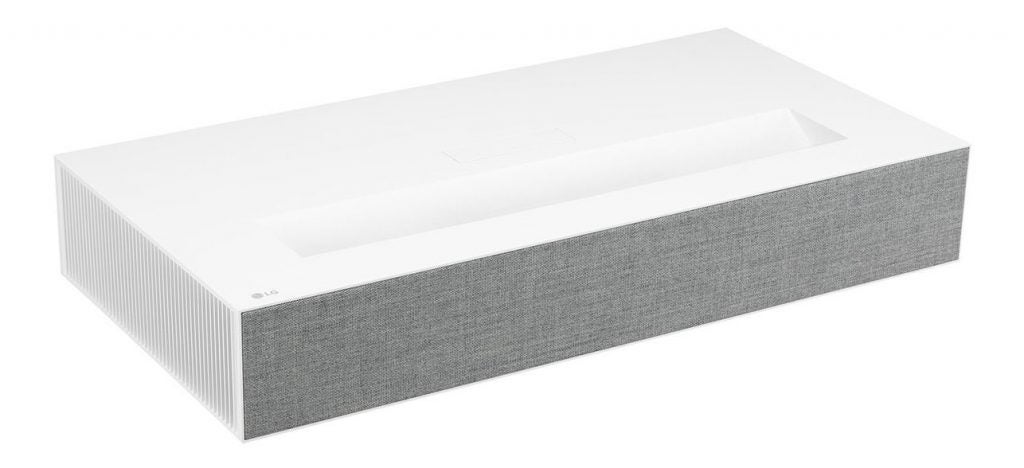
Connections are hidden away on the edge nearest the wall, and the LG HU85LS’s profile is low enough to ensure it doesn’t look too bulky on your sideboard. The image is designed to appear high enough above the projector, too, to ensure the projector’s bodywork doesn’t get in the way.
In addition, the LG HU85LS is heavy enough to point to some serious build quality.
The remote control is a white-fronted, tweaked-for-projectors version of the Magic Remote design LG provides with its TVs. This is well laid out and exceptionally easy to use.
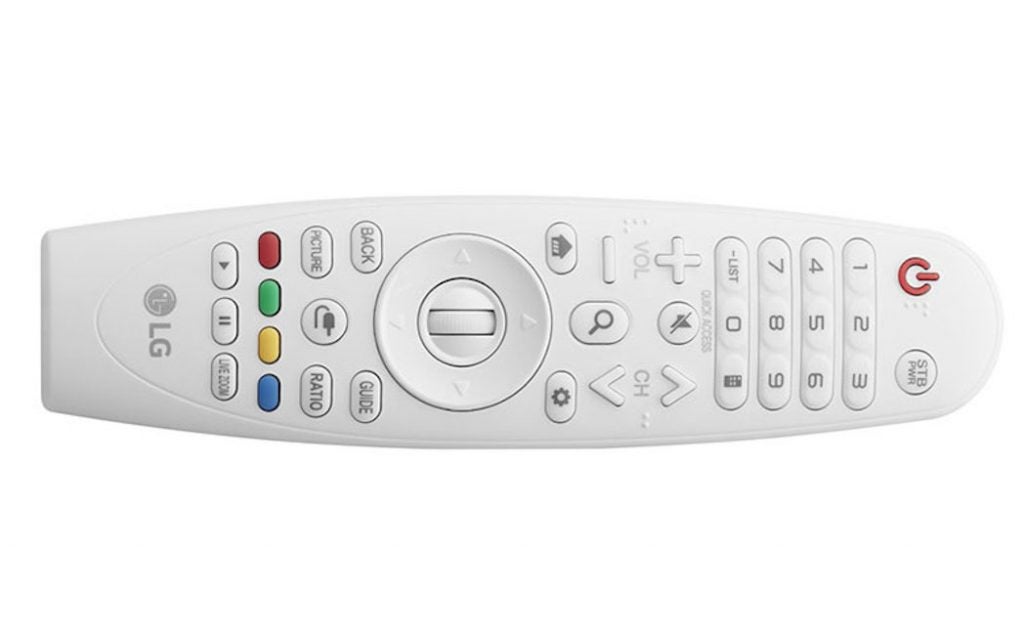
Features
- Supports webOS smart platform
- Built-in voice control
- 2700 lumens of brightness
The LG CineBeam HU85LS’s ultra short-throw design gets round the usual issue of trying to find somewhere in the middle of your room to put your projector. In fact, you can get a 100-inch image with the projector’s front edge just 3.8 inches from your wall or screen.
The LG HU85LS also stands out from the projector crowd with its smart features. In fact, it essentially carries the same webOS 4.5 smart platform found on LG’s latest TVs.
So there are streaming apps (including Prime Video/Netflix/YouTube/Google Play); multimedia playback via USB Plug and Play, Bluetooth; the smart device-friendly Miracast system; and built-in voice control using the Amazon Alexa or Google Assistant platforms.
And when I say built-in voice control, I mean it. You don’t need external listening devices as you do with the recently reviewed Optoma UHD52ALV.
Brightness from the laser light engine is rated at 2700 ANSI lumens. This isn’t as bright as the 3500 lumens of the Optoma UHD52ALV. However, combined with the projector’s ultra short-throw design, it will prove effective at combating the sort of ambient light with which “lifestyle” projectors often find themselves competing.
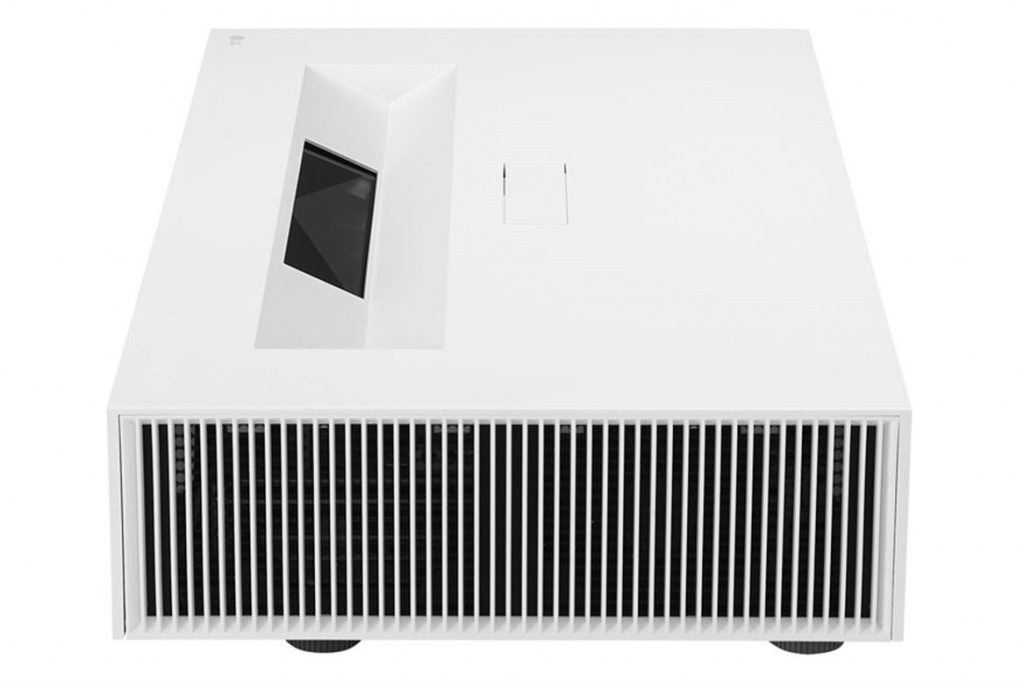
Further boosting its potential performance in both ambient light and blacked-out rooms is its so-called three-channel laser technology. This sees it adding a red laser light source to two blue lasers (one with a green filter) to boost colour range and tones.
This three-channel laser arrangement means that the LG HU85LS doesn’t need to use a colour wheel like the majority of DLP projectors, removing the colour saturation loss and running noise associated with such colour wheels.
The LG HU85LS doesn’t just borrow many of its smart features and remote control from LG’s TV division. It also delivers essentially the same operating menus. These include remarkable picture set-up flexibility and processing by projector standards. Particularly eye-catching is the inclusion of a dynamic tone-mapping system for HDR playback, and LG’s TruMotion processor for reducing judder.
The laser lighting system promises a huge 20,000 hours of product lifespan, versus the 2000-5000 hours typically associated with normal UHP lamps before you have to change them. Laser projection systems to date have typically been characterised by lots of brightness but uninspiring contrast. But the LG HU85LS claims a huge contrast ratio of 2,000,000:1. This is based on manipulation of the laser output to suit different types of content, however. Its “real world” contrast performance will in truth be much lower.
Another handy attribute of the laser projection engine is that the projector can be immediately powered on and off, without the warm up and cool down periods associated with normal lamp projectors.
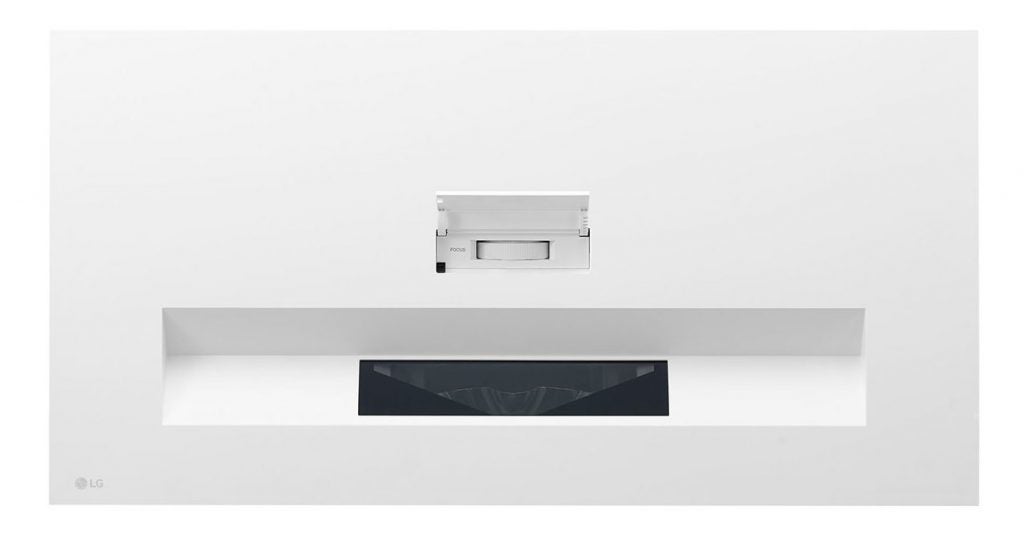
The LG HU85LS can play the HDR10 format of HDR – but that’s it. There’s no HLG HDR or Dolby Vision support. The latter isn’t surprising given that there’s no Dolby Vision profile for projectors. But the lack of HLG is unfortunate for the UK, given that this is the format the BBC uses for its HDR streams.
LG tells me it’s looking into the possibility of adding HLG support to the HU85LS, but I think that needs to be filed under “I’ll believe it when I see it”.
Tucked under the Kvadrat cover on the projector’s rear side is a 2 x 5W speaker system. This doesn’t support Dolby Atmos playback but, as I’ll explain later, it still sounds better than 2 x 5W of power usually would – and far better than pretty much any other built-in projector sound system.
Connections on the opposite side of the LG HU85LS include two v2.0b HDMIs, two USBs, a powered USB Type-C port, and an optical digital audio output.
While the LG HU85LS supports 4K playback, it doesn’t support truly native 4K playback. It uses Texas Instruments’ so-called XPR technology to achieve 4K playback from a lower resolution of DLP Digital Mirror Devices. It does, however, use the relatively large 2716 x 1528 DMD chipset from Texas Instruments, which consistently delivers sharper results than the smaller, cheaper alternative.
Finally, unusually for the projector world, the LG HU85LS doesn’t support 3D.
Set-up
- Should be matched with a screen
- Game Mode for lower latency
- Standard/Vivid modes for bright rooms
If you’re going to use the LG HU85LS with a screen – which you should – rather than just a wall, take extra care when siting that screen in relation to the projector. The better job you do with this, using the information in the manual to help you, the less time you’ll have to spend messing around with the projectors’s fiddly 12-zone keystone adjustment screen.
The projector carries no optical zoom or image-shift options, and is only recommended for screen sizes up to 120 inches.
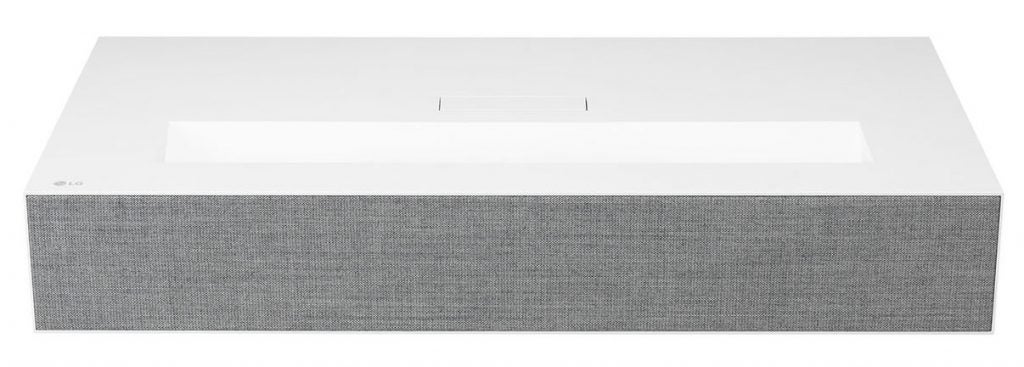
To get the best HDR picture quality out of the LG HU85LS, make sure Dynamic Tone Mapping is on, while Super Resolution is on but set to Low. TruMotion is pretty effective at removing judder without causing the picture to look overly smooth. But most AV fans will still prefer to leave it off.
Noise reduction, too, is okay on its lowest level of strength – but, again, is seldom truly needed.
For me, the HDR Cinema Home setting provides the most all-round natural and punchy look out of the box for dark-room viewing. The HDR Standard setting tries to be too bright, and crushes blacks. The straight HDR Cinema mode makes the image too warm to suit the LG HU85LA’s native colour preferences. The Cinema Home option sits helpfully somewhere in-between.
The Standard or Vivid modes are your best bet for bright-room viewing – which, of course, you very well might find yourself doing given the projector’s “laser TV”-like design.
With SDR viewing you can experiment more freely with the picture presets without having to worry about things getting seriously messed up. Personally, I avoided the HDR Effect mode (which converts SDR to HDR), since it makes colours look too unnatural.
Finally, when gaming don’t forget to activate the Game preset and also turn off the CFI feature. This reduces input lag (the time the projector takes to render images) to just over 50ms. Not a brilliant result, but not shockingly bad either.
Performance
- Bright and wide colour spectrum
- Works well enough in bright rooms
- Mixed audio performance
The effort required to get the LG HU85LS set up properly is rewarded with a very enjoyable picture.
Colours are particularly outstanding. The laser lighting system delivers a noticeably brighter and wider colour spectrum than typical UHP (Ultra High Performance) lamp projectors – up to almost digital professional cinema DCI-P3 levels (when it comes to red, at least). Or this is the case with the Cinema Home preset, anyway. Other presets can generate a yellowy-green undertone that’s hard to calibrate away.
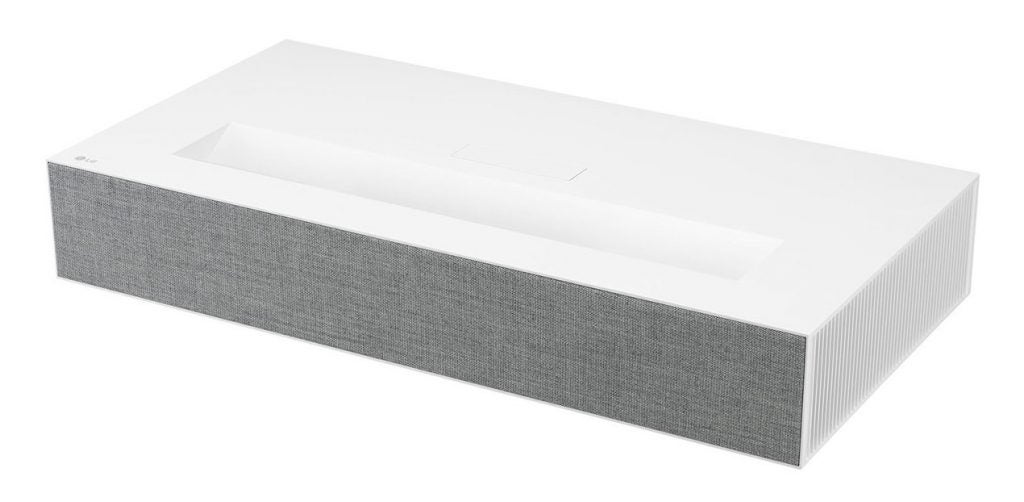
While black levels aren’t in the same ball park as those of top dedicated home cinema projectors such as the JVC N5, they’re better than those of most affordable laser projectors. Even though the LG HU85LS still gives you the usual laser benefits of high brightness, wider colour range, no need for lamps replacement, and instant off/on.
Black levels are also superior in Cinema mode to those of most ultra short-throw projectors. After all, such models are typically designed to put brightness ahead of black level, to combat the sort of ambient light often seen in living rooms.
Also impressive for such an overtly “living room” projector is how much shadow detail the LG HU85LS presents. This helps dark scenes enjoy a realistic sense of depth and texture during dark-room viewing that escapes most rival “lifestyle” projectors.
That’s not to say that the LG CineBeam HU85LS doesn’t also work well in bright rooms. The non-Cinema picture presets are bright and vibrant enough to keep pictures looking not just watchable, but actually fairly punchy in all but direct sunlight. Especially if you combine the projector with a high-gain screen.
In fact, if you do that you’d end up with a setup not unlike the Hisense “Laser TV” we tested a while back. Just take care that the screen you get doesn’t cause the distracting reflections on walls and ceilings that the Hisense system suffers.
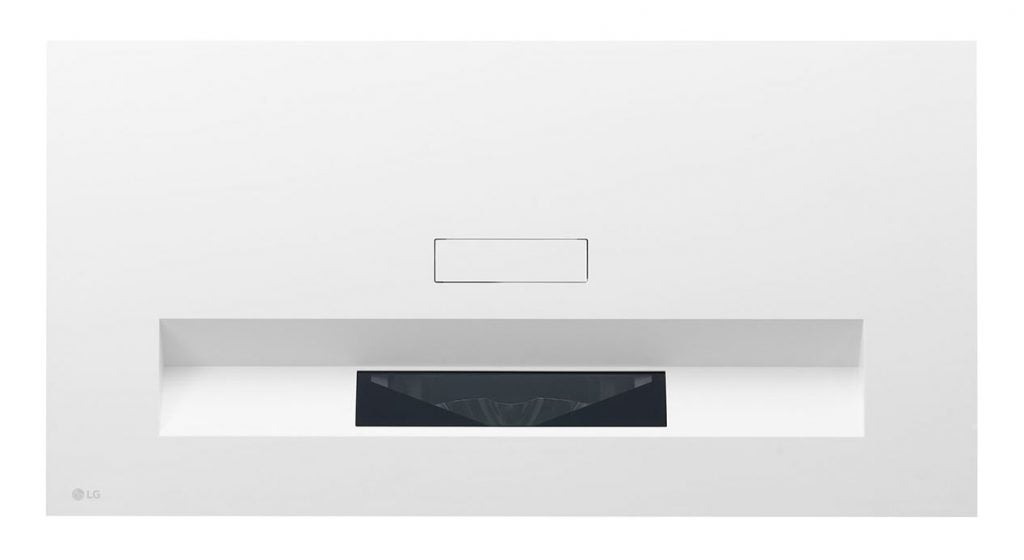
The HU85LS’s pictures aren’t quite as bright as those of Optoma’s UHD52ALV living room projector. But the laser-enhanced colours hold their own extremely well in light conditions, and you don’t notice the greenish undertone I mentioned earlier as much.
The HU85LS’s HDR performance also benefits from LG’s Dynamic Tone Mapping system. This analyses HDR images in real-time to optimise playback from HDR10 sources. Results include more dynamic-looking HDR pictures, less clipping (lost shading detail), and none of the unnatural-looking glowing colours seen with HDR on the Optoma UHD52ALV.
LG’s laser CineBeam model does a good job with SDR content, too. Black levels look slightly better, and it reins in the laser colour range pretty effectively to retain a natural, balanced and subtle look with SDR’s more limited colour palette.
There are projectors, including some cheaper modes, which perform better than the LG HU85LS in dark rooms – at least where black levels are concerned. And there are projectors – again, including some cheaper ones – that perform better than the LG HU85LS in bright rooms, too. So if you want either a dedicated serious home cinema or dedicated bright-room projector, you could save money by looking elsewhere.
However, the “genius” of LG’s innovative CineBeam model lies in how well it adapts to both bright and dark rooms. And given the way most households use their main living room TVs, I can imagine this flexibility being appealing to regular households that simply want an unusually huge screen.
Another string to the LG HU85LS’s bow is its sharpness. Despite not offering support for a full native 4K pixel count in the traditional sense, the LG HU85LS still presents 4K sources with sufficient detail and clarity to deliver a comfortably above-HD performance.
The projector keeps motion looking sharp and natural, too, even without calling in the TruMotion processing. Although, if you do find the projector’s judder with 24p sources distracting, TruMotion’s lower power settings can help without creating many unwanted processing side-effects.
I’ve touched on some minor limitations of the LG HU85LS already, but there are a couple of other picture issues of which you should be aware. First, it’s worth reiterating that the LG HU85LS really can’t get as deep with its black levels as a normal lamp DLP projector. Or, especially, one of JVC’s DLA projectors. As such, dark scenes during dark-room viewing can look a little grey. To be fair, though, no other projector that focuses as heavily on living room use delivers great black colours either.
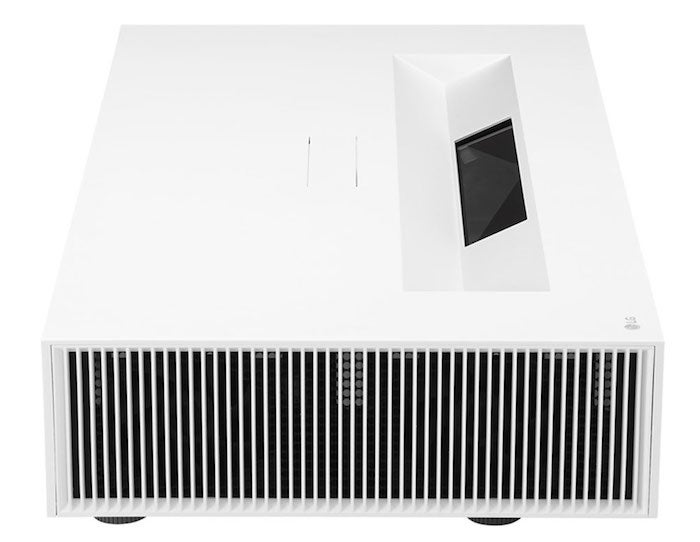
The other very unexpected issue is what looks like DLP’s rainbow effect (stripes of pure colour that flit over stand-out bright picture areas). Why is this unexpected? Because its laser lighting arrangement means it doesn’t have to use the sort of spinning colour wheel that’s usually responsible for rainbowing on DLP projectors.
Whatever the cause, it’s present – for instance, in the garage slideshow sequence of the It 4K Blu-ray. And it’s there in many of the dark shots of the SDR Blu-ray of the final Harry Potter film.
First impressions of the LG CineBeam HU85LS’s 2 x 5W audio are mixed. It’s okay on minor sound details, but can come across a bit hemmed in and thin. As with LG’s TVs, however, there’s a built-in fix in the shape of the Adaptive Sound option. Switch this on and the clever processing instantly makes the sound bigger, in terms of both its dynamic range and the extent to which it’s cast out from the projector.
The forward-firing drivers display greater attack, and because the projector is sat so near your screen/wall, the sound actually appears to be “attached” to the pictures it’s supposed to be accompanying. This is something you seldom get with built-in projector audio systems.
The Adaptive Sound option can cause a touch of distortion with heavy bass sounds, but overall it is transformative. In fact, with this mode active the LG CineBeam HU85LS sounds better than many built-in TV sound systems.
Should you buy it?
You’re not in need of a dedicated home cinema projector: The LG HU85LS might appear a bit pricey for a lifestyle projector. To be fair, though, its laser technology does give you an extended life without having to pay for replacement lamps. It also delivers levels of colour that suit both HDR and daytime viewing better than typical affordable lamp projectors.
You’re susceptible to the “rainbow effect” It isn’t perfect – especially if you’re susceptible to seeing whatever this laser projector’s equivalent of the rainbow effect might be – but the LG CineBeam HU85LS does what it sets out to do extremely well.
Verdict
Provided you’re not susceptible to seeing the LG HU85LS’s rainbow-like colour noise, it’s a uniquely smart, user-friendly and effective addition to the growing “living room projector” market







